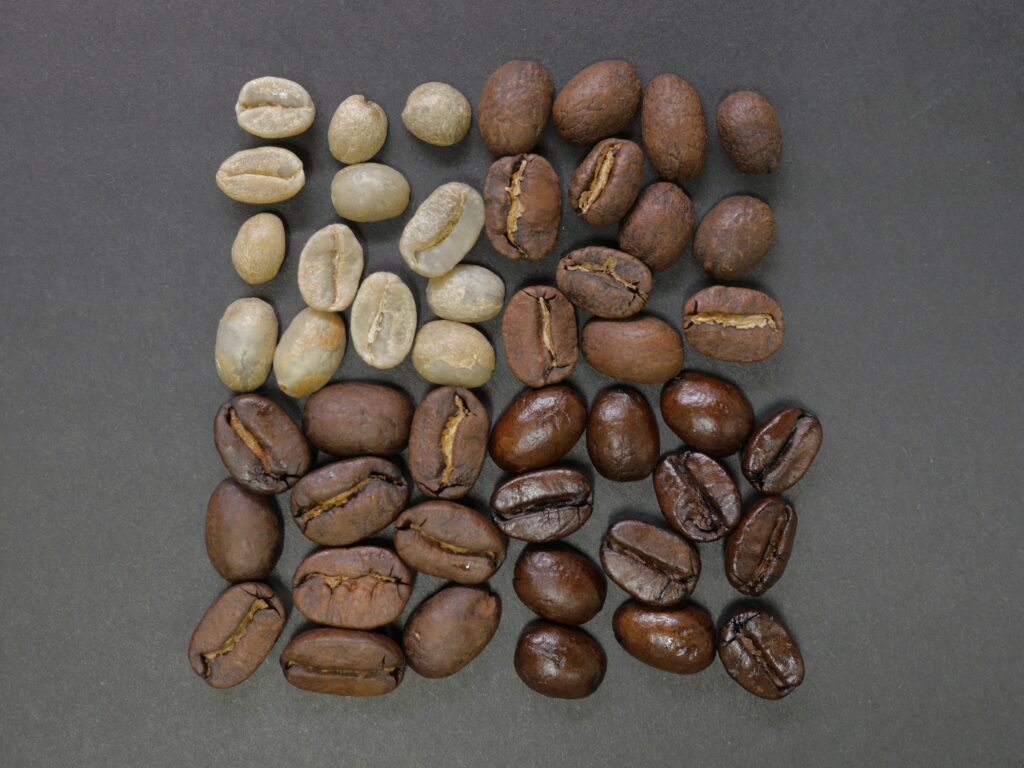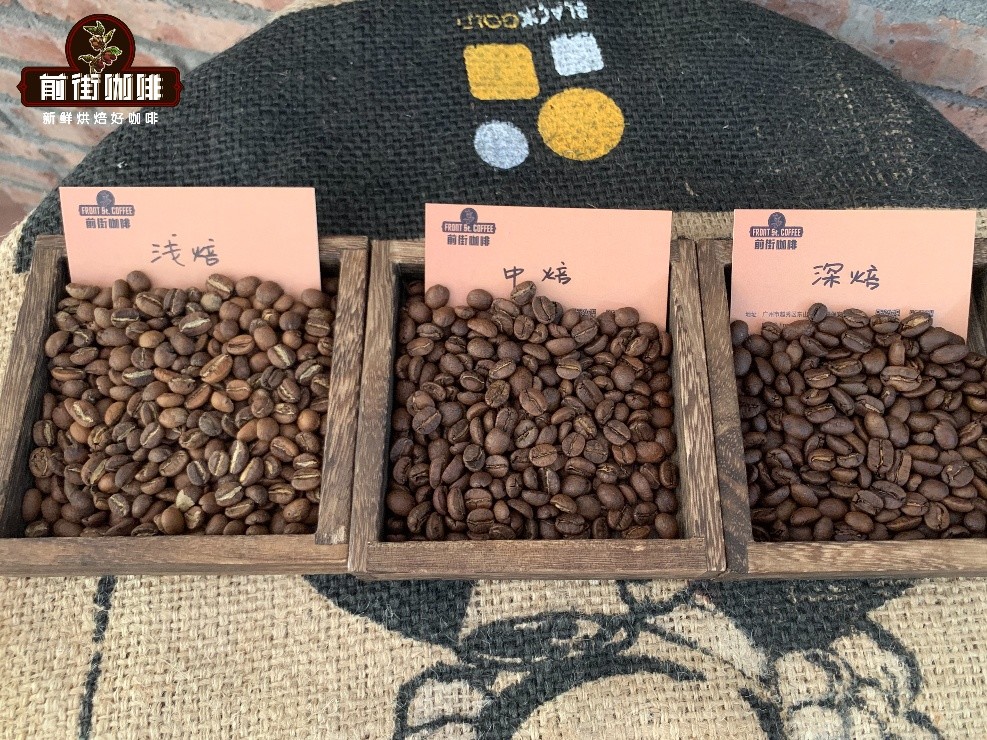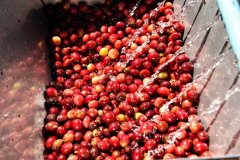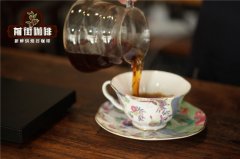What is Agtron? What is the effect of different readings of coffee roasting color classification on coffee flavor and taste
Agtron may sound like an agricultural superhero robot, but behind its name lies a simple coffee roasting test: consistency. Agtron uses near infrared light to analyze the color of ground or whole bean coffee. Then output an easy-to-read number that represents the degree of baking. The smaller the number, the darker the roast.

For example, the Agtron reading for espresso roasting is usually more than 20, deep roasting is more than 30, regular roasting is 40-55, and light roasting is above 55.
The degree or depth of roasting can significantly affect the flavor characteristics of coffee, just like how coffee is roasted in a given manner: fast at high temperature, slow at low temperature, and so on. Light baking may taste bread, wood, or grain; too deep barbecue is charred and thinned. But apart from these extremes, no baking degree is necessarily better than the other. Baking preferences vary widely, influenced by tradition, brewing style (coffee used for drip brewing is usually lighter than coffee used for espresso or pressure brewing) and drinking style (people who drink milk coffee usually prefer deeper roasting to lighter roasting).

By using a specially improved spectrophotometer commonly known as Agtron, the baking degree can be measured with a certain precision. We use the M-Basic or "Gourmet" Agtron scale, and for each coffee evaluation, we provide readings of the whole coffee bean before grinding (the number in front of the slash) and the same coffee bean after grinding (the number after the slash). For example, a reading of 55 stroke 68 means that the external whole bean M-Basic reading of coffee is 55 and the grinding reading is 68. Agtron readings range from the lightest about 70 whole beans and 95 ground beans to 25 whole beans and 30 ground coffee beans (very black; basically charred, although some coffee drinkers like this style). Most of the coffee we comment on in coffee reviews is close to the middle of the proportion, with the deepest whole beans around 45 and the shallowest around 60. According to the Agtron readings, we also insert general descriptive terms for baking colors-light, medium, medium dark, dark, etc. -each coffee is reviewed according to the terminology developed by the Fine Coffee Association of America.
Here is a detailed description of the color value of coffee roasting:
Roast
Agtron
Characteristics
Light
> 70
Light brown to cinnamon
The body color is lighter, sometimes the aroma is lighter and has the smell of tea.
Bean noodles are oil-free
Medium-Light
61-70
Medium light brown
Bright, sweet acidity, the difference between green coffee is clear
Keep the surface of coffee beans dry
Medium
51-60
Medium brown
The acidity is balanced, the wine is fuller, and the difference between green coffee is still obvious.
General dried bean surface
Medium-Dark
41-50
A rich brown
Oil droplets appear on the surface of beans
The fruit turns chocolate, with a hint of roasted bitterness.
The acidity weakens and sometimes the wine is heavier.
Dark
35-40
Dark brown / black
Oil stains to the shiny surface
Bittersweet, scorched wood tastes outstanding.
Soft acidity
Very Dark
25-34
The black surface is covered with gloss.
Bitter / bitter sweet tones dominate
The body becomes thinner and the difference between green coffee is completely muted.
Extreme-Dark
< 25
A black, glossy surface
Burning bitterness dominates
Important Notice :
前街咖啡 FrontStreet Coffee has moved to new addredd:
FrontStreet Coffee Address: 315,Donghua East Road,GuangZhou
Tel:020 38364473
- Prev

Introduction to the difference of flavor and taste between carbon dioxide impregnated coffee beans and anaerobic treated coffee beans
One of the rapidly popular new processes that can produce an incredibly unique flavor involves anaerobic fermentation, which is called carbonic acid impregnation. Let's first break down the terminology here so as not to get caught up in the details. Anaerobic environment carbon dioxide carbon dioxide-rich environmental impregnation is more inclusive than fermentation, referring to
- Next

What kind of dessert would you like to have a black coffee latte cappuccino? Ice cream, nuts and coffee?
Everyone knows that it is very important to match your own red wine (or other wine) with the right dessert when drinking. Drinking coffee should also choose the right dessert, it can balance the taste of coffee. Although Qianjie does not sell desserts and focus on coffee, this does not affect people's love of desserts. Whether it's chocolate doughnuts or lemon pie, it's undeniable.
Related
- Detailed explanation of Jadeite planting Land in Panamanian Jadeite Manor introduction to the grading system of Jadeite competitive bidding, Red bid, Green bid and Rose Summer
- Story of Coffee planting in Brenka region of Costa Rica Stonehenge Manor anaerobic heavy honey treatment of flavor mouth
- What's on the barrel of Blue Mountain Coffee beans?
- Can American coffee also pull flowers? How to use hot American style to pull out a good-looking pattern?
- Can you make a cold extract with coffee beans? What is the right proportion for cold-extracted coffee formula?
- Indonesian PWN Gold Mandrine Coffee Origin Features Flavor How to Chong? Mandolin coffee is American.
- A brief introduction to the flavor characteristics of Brazilian yellow bourbon coffee beans
- What is the effect of different water quality on the flavor of cold-extracted coffee? What kind of water is best for brewing coffee?
- Why do you think of Rose Summer whenever you mention Panamanian coffee?
- Introduction to the characteristics of authentic blue mountain coffee bean producing areas? What is the CIB Coffee Authority in Jamaica?

